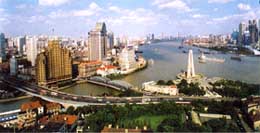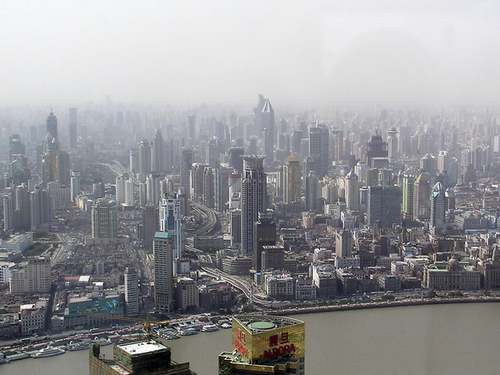|
|
|
Duration:
May 1 to Oct 31, 2010
Expected Visitors:
70 million
Expected Participants:
200
|
|
Brief Introduction to the World Expo Shanghai
|
|
World Expositions are galleries of human inspirations and thoughts. Since 1851 when the Great Exhibition of Industries of All Nations was held in London, the World Expositions have attained increasing prominence as grand events for economic, scientific, technological and cultural exchanges, serving as an important platform for displaying historical experience, exchanging innovative ideas, demonstrating esprit de corps and looking to the future.
With a long civilisation, China favours international exchange and loves world peace. China owes its successful bid for the World Exposition in 2010 to the international community's support for and confidence in its reform and opening-up. The Exposition will be the first registered World Exposition in a developing country, which gives expression to the expectations the world's people place on China's future development.
So what will Expo 2010 Shanghai China deliver to the world? There is no doubt the Chinese people will present to the world a successful, splendid and unforgettable exposition.
Expo 2010 Shanghai China will be a great event to explore the full potential of urban life in the 21st century and a significant period in urban evolution. Fifty-five percent of the world population is expected to live in cities by the year 2010. The prospect of future urban life, a subject of global interest, concerns all nations, developed or less developed, and their people. Being the first World Exposition on the theme of city, Exposition 2010 will attract governments and people from across the world, focusing on the theme "Better City, Better Life." For its 184 days, participants will display urban civilisation to the full extent, exchange their experiences of urban development, disseminate advanced notions on cities and explore new approaches to human habitat, lifestyle and working conditions in the new century. They will learn how to create an eco-friendly society and maintain the sustainable development of human beings.
Expo 2010 Shanghai China will centre on innovation and interaction. Innovation is the soul, while cultural interaction is an important mission of the World Expositions. In the new era, Expo 2010 Shanghai China will contribute to human-centred development, scientific and technological innovation, cultural diversity and win-win cooperation for a better future, thus composing a melody with the key notes of highlighting innovation and interaction in the new century.
Expo 2010 Shanghai China will also be a grand international gathering. On the one hand, we shall endeavour to attract about 200 nations and international organisations to take part in the exhibition as well as 70 million visitors from home and abroad, ensuring the widest possible participation in the history of the World Expositions. On the other hand, we will put Expo 2010 Shanghai China in a global perspective and do our best to encourage the participation and gain the understanding and support of various countries and peoples, in order to turn Expo 2010 Shanghai China into a happy reunion of people from all over the world.
In addition, Expo 2010 Shanghai China will offer a wonderful opportunity for cross-culture dialogues. Before the conclusion of the Exposition, a "Shanghai Declaration" will be issued. This declaration, hopefully a milestone in the history of the World Expositions, will epitomise the insights to be offered by the participants and embody people's ideas for future cooperation and development and extensive common aspirations, thereby leaving a rich spiritual legacy of urban development to people throughout the world.
|
|
The Chinese Government will go to great lengths to make Expo 2010 Shanghai China a special event that carries on traditions and opens a new vista into the future. Our motto is: "Keeping in mind the next 60 years' development while preparing for the six months' Exposition." We count on the continuing attention, support and participation of all the peace-loving countries.
|
|
|
|
|
|
History of Shanghai:
|
|
|
Origin of "Hu" and "Shen"

Shanghai is called in Chinese "Hu" for short and "Shen" as a nickname. About 6,000 years ago, the western part of today's Shanghai dried up into land and its eastern part became a piece of land about 2,000 years ago. During the Spring-Autumn and Warring States Periods (770-221 BC), this area was once the feoff of Huang Xie, the Chun Shen Governor of the State of Chu.
So, "Shen" comes from the title of the governor. During the Jin Dynasty (4th-5th centuries), fishermen living along the Songjiang River (today's Suzhou Creek) and the coast of the East China Sea created a fishing tool called "Hu." By combining the name of the fishing tool and the then term
for estuary of big rivers, they coined a Chinese character "Hu" to name the place as it sits at the mouth of the Yangtze River, the longest river in China.
Founding of the City
Shanghai began as Huating County, an administrative district established in 751 AD. The county, located in an area known today as Songjiang District, had its boundary reaching today's Hongkou District in the north, Xiasha in the east and the coast in the south. In 991 AD, Shanghai Town was set up in the county.
During the 1260-1274 period, the town evolved into an important trading port and in 1292, the then central government approved the establishment of Shanghai County in this area, which has been widely deemed as the official beginning of the city of Shanghai.

Modern Age
In the 16th century (or the middle period of the Ming Dynasty), Shanghai became the national center of textile & handicraft industry. In 1685, Shanghai set up its first customs office. After the Opium War in the mid-19th century, Shanghai served as a major trading port and gateway to inland China. With invasion of the big powers from across the world, Shanghai was then turned into a semi-feudal and semi-colonial city for about 100 year. On May 27, 1949, Shanghai was liberated by the People's Liberation Army of the Communist Party of China from the Kuomingtang rule and began to write its chapter in the history of the development of New China.
Historic Transformation
Shanghai has undergone a historic transformation since its liberation on May 27, 1949. In the past more than 50 years, fundamental changes have taken place in this once semi-feudal and semi-colonial city.

Particularly, since the Chinese government adopted the reform and opening policy in 1978, Shanghai has witnessed marked progresses in its social and economic development, thanks to the distinctive strategies adopted by the city government applicable to the advancement of a megalopolis like Shanghai.
Today, Shanghai is the largest economic and transportation center in China. It also enjoys a reputation as a famed historical city in the country. Now, the city is striving to turn itself into one of the economic, financial, trade and transportation centers in the world. It also aims to lead the country in building a well-off society and in achieving the initial modernization.
|
|
|
|
|
|
|
|
|
Shanghai Yuyi Translation Service Co.,Ltd. All Rights Reserved
Address: 2/F, No.11, Songlin Rd., Pudong District, Shanghai, P.R.China
|
|
|
|